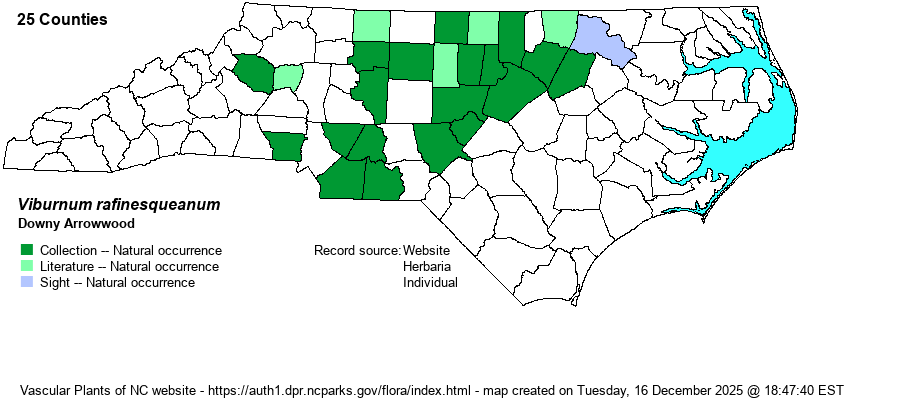| Author | J.A. Schultes | |
| Distribution | One of the relatively small number of plants limited to the Piedmont. Found throughout the eastern and central Piedmont, from the Fall Line west to Forsyth and Gaston counties, shortly disjunct to Caldwell County (McCormick and Peifer in 2022). It is absent in the Mountains and the Coastal Plain.
This is a Northern species that ranges from southern Canada south to NC, western GA, and eastern OK. Oddly, it seems not yet to have been recorded in SC, though it occurs in several NC counties along the state line. | |
| Abundance | Formerly fairly common to locally common (to even locally very common) in the northeastern third of the Piedmont, west to Caswell and Chatham counties. Uncommon to locally fairly common in the central Piedmont. There has been some discussion among field botanists that this species is declining and now much less often seen than 20-30 years ago; however, it is still locally quite common in the Triangle region of eastern Chatham, Wake, Durham, and Orange counties, especially in the Durham Triassic Basin. | |
| Habitat | This is a species of dry to mesic forests, often on flats or gradual slopes, especially in circumneutral soils. It is most numerous in the Basic Oak-Hickory Forest natural community, but it also is found in acidic pine-oak forests, hardpan forests (usually where mafic), and less so in richer soils of mesic mixed forests. |
| Phenology | Blooms from mid-April to May, and fruits in June and July. | |
| Identification | This is a medium-sized deciduous shrub that grows to 5-6 feet tall, on average. It has opposite, ovate to narrowly ovate leaves that are strongly toothed, growing to about 2-2.5 inches long. The leaves are narrower than are those of V. dentatum (strict sense) and perhaps so, or similar in width, to V. recognitum. However, the main distinguishing mark for this species is its sessile leaves, or leaves with a very short petiole, barely 1/8-inch long if that. The two other similar strongly toothed Viburnums of the Piedmont have more obvious petioles. Even so, you may find some plants that simply come close to be borderline in petiole length. Though not clonal, in some parts of the eastern Piedmont this species can dominate the shrub layer, occurring by the hundreds over a number of acres. | |
| Taxonomic Comments | Weakley (2018) spells the specific name with an “e” as opposed to an “i” in most other references – thus, V. rafinesqueanum; Wikipedia and a few others do as well. After all, it is named after its discoverer, Constantine Samuel Rafinesque-Schmaltz.
| |
| Other Common Name(s) | Rafinesque’s Arrowwood | |
| State Rank | S4 | |
| Global Rank | G5 | |
| State Status | | |
| US Status | | |
| USACE-agcp | | |
| USACE-emp | | |

